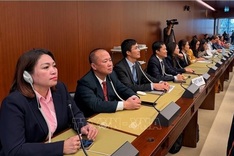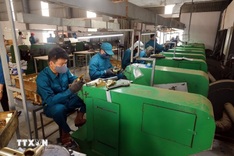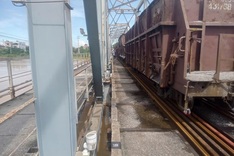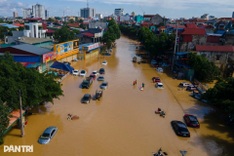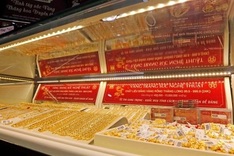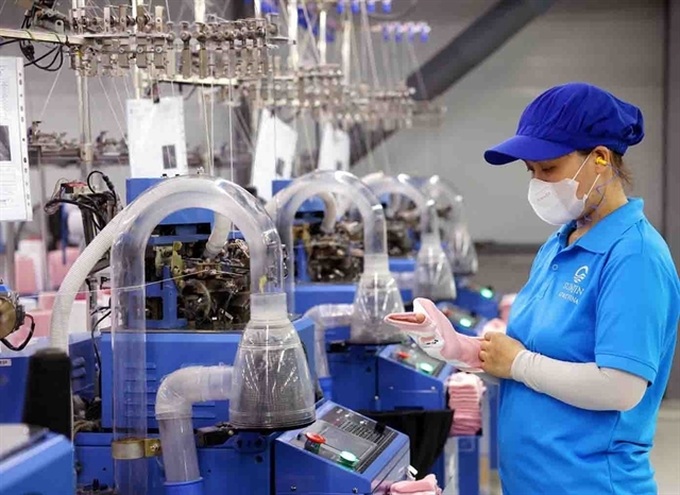
Plastic products and electronic components for the printing industry are manufactured by workers of Taiwanese Chee Yuen Vietnam Electronic Technology Co in Haiphong Province. — Photo VNA
A key driver of optimism lies in a series of strategic cooperation agreements signed during the recent official visit of Thai Prime Minister Paetongtarn Shinawatra to Vietnam.
Among the highlights was a Memorandum of Understanding (MoU) between Hung Yen Province and Thailand’s WHA Group to develop the Phu Cu Industrial Zone. Another MoU was signed between Phu Tho Province and Amata Vietnam Group for strategic investment cooperation, along with an approved investment policy for the Giang Quang Thinh Industrial Zone in Thanh Hoa Province, also backed by Amata.
These moves reflect Thailand’s growing footprint in Vietnam’s industrial real estate sector. WHA and Amata, which have already committed billions of dollars to projects in Quang Ninh, Dong Nai, and Nghe An, are expanding their presence as part of a long-term strategy to capture steady foreign investment inflows.
Amata Vietnam CEO Somhatai Panichewa confirmed that the company will research investment opportunities and develop projects in industrial zones, smart urban areas, logistics, and trade infrastructure in Phu Tho Province.
Beyond Thailand, foreign investment momentum is being reinforced by partnerships from other countries. During a meeting with Party General Secretary To Lam, Kudryashov Sergei Ivanovich, General Director of Russian energy giant Zarubezhneft, reaffirmed the firm’s cooperation with Vietnamese partners to develop renewable energy projects, including offshore wind power and green hydrogen.
In a separate meeting, Chinese investor Peng Gangping, Chairman of China Huadian Engineering Co, expressed plans to expand investments in biomass, wind energy, and energy storage projects in provinces such as Dak Lak, Tra Vinh, Quang Tri, and Lam Dong. To date, Huadian has invested approximately USD 2.8 billion in power projects in Vietnam, with a total installed capacity of 1.5 GW.
US investors show confidence in Vietnam
Adding to the positive outlook, US investment fund Warburg Pincus has committed an additional USD 1 billion to The Grand Ho Tram project, reinforcing its long-term investment strategy in Vietnam. According to Baodautu, the move reflects Vietnam’s enduring appeal to high-value foreign investors, despite ongoing concerns over US tariff policies.
Meta’s Director of Public Policy, Molly Montgomery, also praised Vietnam’s proactive engagement with Washington over tariff concerns. Speaking during a recent meeting in Washington, DC, with Vo Xuan Hoai, Deputy Director of the National Innovation Centre, Montgomery highlighted the importance of the Vietnamese Government’s clear stance on trade issues, which is crucial for companies operating major production networks in the country.
Investment data paints an encouraging picture
Vietnam’s disbursed foreign direct investment (FDI) reached USD 6.74 billion in the first four months of 2025, up 7.3 percent year-on-year—the highest four-month figure in the past five years, according to the General Statistics Office (GSO) under the Ministry of Finance.
FDI registrations surged to USD 13.82 billion, marking a 40 percent increase compared to the same period last year.
Singapore led with USD 1.6 billion in newly registered capital (28.6 percent), followed by mainland China with USD 1.52 billion (27.1 percent), and Japan with USD 573.2 million (10.3 percent). Other major contributors included Hong Kong (USD 499.9 million), Taiwan (USD 389 million), and South Korea (USD 148 million).
Additionally, USD 6.40 billion was added to 540 existing projects from January to April, nearly four times higher than the same period in 2024.
Vietnam also recorded 1,106 capital contribution and share acquisition deals by foreign investors, with total value doubling to USD 1.83 billion.



